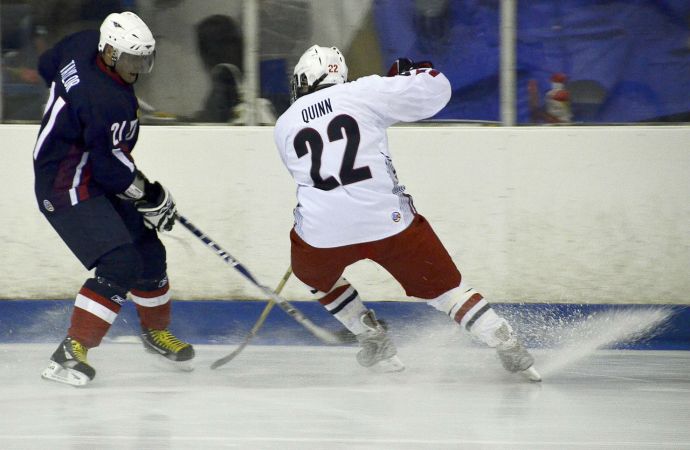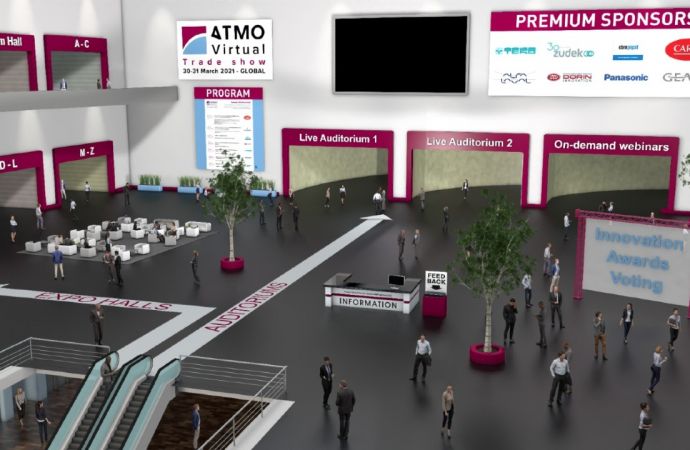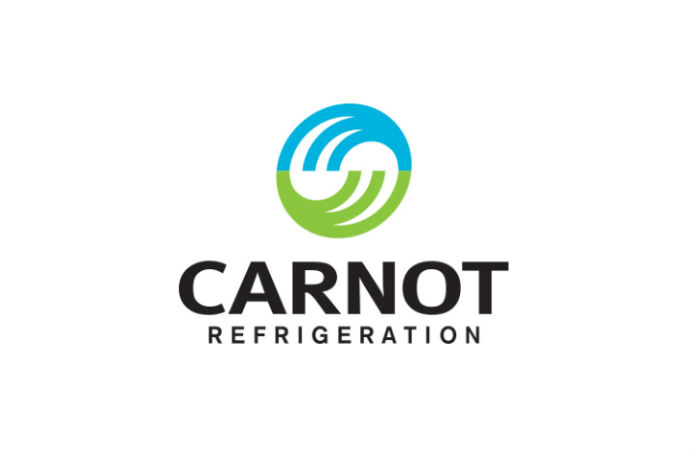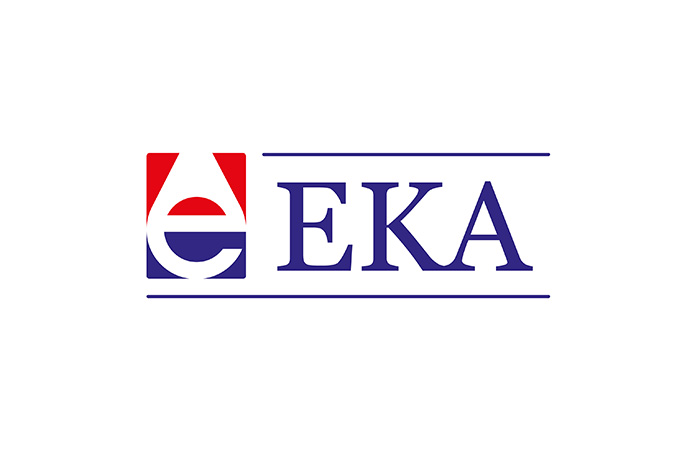The National Hockey League and Chemours are promoting HFO blends R449A and R513A as green refrigerants, though CO2 and/or ammonia would be greener, say industry stakeholders.

Ice hockey was first played on frozen ponds, which are freezing later and melting earlier as a result of climate change.
Acknowledging the sport’s fundamental link to the environment and its preservation, the National Hockey League (NHL) – the 101-year-old organization now consisting of 31 professional ice hockey teams across Canada and the U.S. – launched the NHL Green initiative in 2010.
“Most of our players learned to skate on outdoor rinks,” said NHL Commissioner Gary Bettman, in announcing the program. “For that magnificent tradition to continue through future generations, we need winter weather – and as a league we are uniquely positioned to promote that message.”
For help in “greening” league games and operations, the NHL consulted with the National Resources Defense Council (NRDC). Each NHL team appointed one or more sustainability representatives to liaise with the league.
In 2014, the NHL released its first sustainability report, which provided data on its environmental impact. This was followed two years later by a program focusing specifically on ice rinks – the Greener Rinks Initiative; its mandate is to measure and evaluate the combined environmental impact of approximately 4,800 indoor ice rinks across North America, which have an average age of over 30 years.
The Greener Rinks Initiative is “committed to sharing sustainable business practices with community rink owners and operators,” according to the NHL.
In March of this year, the NHL released its second sustainability report, which reported that the majority of NHL arenas still use R22 or HFCs as refrigerants, with about 20% using ammonia.
R22’s days are numbered as production and import of the gas in North America are slated to end in January 2020. In May, the NHL promoted what could be a replacement refrigerant for R22, announcing a multi-year partnership with The Chemours Company to provide Opteon XP40 (R449A) and Opteon XP10 (R513A) to rinks across North America. (The announcement did not disclose any financial terms.)
The NHL and Chemours view this partnership as continuing the league's environmental stewardship, saying in the announcement that it “supports the NHL Greener Rinks Initiative."
But are R449A and R513A the most environmentally sustainable refrigerants to use in ice rink systems, particularly in new facilities?
A number of industry stakeholders point to natural refrigerants ammonia and CO2 as more sustainable and future-proof for ice rinks than the Opteon refrigerants being promoted by the NHL. This mirrors a similar discussion going on in other HVAC&R-related sectors like food retail and cold storage.
CO2 is a great heat pump; you get a lot of heat out of it for a little additional kW input.”
– Tim Henderson, Hillphoenix
Art Sutherland, president and CEO of Accent Refrigeration Systems, Victoria, B.C., a major designer and installer of ice rink refrigeration systems, strongly endorses the use of natural refrigerants in ice rink systems. “The whole world is going this way, moving away from [HCFCs] and HFCs, and now there’s concern about HFOs and their acidic nature,” he said. “Ammonia and CO2are the best true green solutions.”
"It would be a shame if the NHL bypasses any opportunities to adopt truly low-GWP alternatives such as CO2 and ammonia,” said Christina Starr, Climate Policy Analyst for the Washington, D.C.-based Environmental Investigation Agency (EIA). “Particularly for new rinks and systems, these alternatives are available, proven, and offer opportunities for energy improvements over HFCs as well as direct climate benefits."
Toronto-based CIMCO Refrigeration (a division of Toromont Industries) is a major designer and installer of ice rinks that claims to have installed more than half of the world’s rinks. The company offers a range of refrigerant options for ice rinks, including ammonia/CO2, ammonia/glycol, CO2 and “Freon,” which is Chemours’ trademark for a number of halocarbon refrigerants. (Information on CIMCO's CO2 ice rink patents for the Canadian market can be found here.)
For each project, CIMCO looks at initial cost, energy consumption and maintenance, and calculates total cost of ownership. “Generally low-charge ammonia/glycol or CO2 are a better choice over a 20-30 year time frame,” said Benoit Rodier, CIMCO’s director of business development. “We present the business case and the customer takes a decision.”
Customers who choose Freon “are looking for the lowest initial investment and are not so concerned about efficiency over time,” he added.
In Canada, the government of Quebec is giving an incentive to ice rinks that replace R22 with either ammonia or CO2, and one-third of that incentive if HFO blends are used, noted Rodier. “The government recognizes the value natural refrigerants bring to the table.”
Given that previous generations of synthetic refrigerants – CFCs, HCFCs and HFCs – have prompted environmental regulations, “it makes no sense to use a fourth-generation synthetic molecule,” said Marc-André Lesmerises, a CO2 refrigeration pioneer who is president and founder of Carnot Refrigeration, Trois-Rivières, Quebec.
In Europe, “the cost [of HFOs] and potential environmental issues put an end to the discussion fairly quick,” said Jörgen Rogstam, managing director for EKA (Energi & Kylanalys), a Swedish firm focused on ice rink efficiency.
Operationally, natural refrigerants have performed well in studies of ice rink systems. A 2013 study by the Canadian government’s CanmetENERGY research group found that CO2 systems had the best COP (coefficient of performance) for refrigeration and heating (3.9), followed by NH3 (3.0) and HFCs (2.6); and the lowest annual energy consumption (111,748 TR / 393 MW per hour), followed by ammonia (149,281 TR / 525 MW) and HFCs (173,735 TR / 611 MW).
A report by CIMCO that included measures of horsepower expended per 100 tons of refrigerant, listed CO2 as the lowest (123.1/ 46.07 kW) followed by ammonia (123.5 or 434.3 kW), R513A (144.2 or 507.1kW) and R449A (168.8 or 593.6kW), among other refrigerants. CO2 was evaluated under a 65°F (18.3°C) condensing temperature.
On the issue of “glide,” natural refrigerants also have advantages. For example, CO2 boils at a constant temperature, whereas R449A is a zeotrope, or a blend of refrigerants that boil at different temperatures. This temperature range, or glide, is a factor in evaluating refrigerants, with a potential impact on efficiency, said Tim Henderson, Hillphoenix’s industrial program manager.
In contrast with R449A, R513A is an “azeotropic refrigerant with zero glide,” according to Chemours.
Linde AG, a distributor of R449A, states in promotional literature that the refrigerant “has a moderate glide of approximately 4K that can be easily managed by a minor adjustment in the expansion device.” In addition, as a zeotrope, R449A “must be charged in the liquid phase to prevent fractionation.”
But Henderson pointed out that refrigerants with glide may require larger condensers and possibly larger evaporators with more surface area “to make up for the glide.” He has also heard of problems with “expansion valve sizing.”
Moreover, glide “has been proven to have a negative effect on the heat transfer performance of the refrigerant and may result in the chemical breaking down over a period of time,” said Dave Rule, president, International Institute of Ammonia Refrigeration (IIAR), Alexandria, Va.
Outreach to the community
The NHL declined to be interviewed for this article, deferring questions to Chemours, a Wilmington, Del.-based chemical producer formed in 2015 as a spinoff of DuPont.
Allison Skidd, Chemours’ North America marketing manager, fluorochemicals, described the NHL-Chemours partnership as providing “options for community rinks across North America that are faced with the need to address environmental regulations as well as economic sustainability concerns.”
Chemours and the NHL are working on outreach to community rink owners, operators and mechanical contractors “to offer resources for selection of safe, operationally cost-effective, environmental and financially sustainable alternatives, such as Opteon refrigerants which are non-ozone depleting and have low global warming potential,” Skidd said. The effort covers both retrofits of refrigerants in existing systems as well as equipment replacement in new and existing locations.
As to which refrigerant or system the 31 NHL teams will ultimately employ, “each team or arena owner will be the final decision maker after considering the many factors for their situation,” said Skidd. No NHL arena is known to have used Opteon refrigerants to date.
Meanwhile, NHL players have given an endorsement to ammonia. Last month the Edmonton (Alberta) Sun reported that Rogers Place, home to the NHL’s Edmonton Oilers, ranked second in ice rink quality in a poll of NHL players, coming in only behind the Montreal Canadiens. Both teams use ammonia-based ice rink systems.
Opteon refrigerants have been employed in “numerous systems across North America before and since the partnership began,” said Skidd. These include retrofits of R22, R507 and R134a, replacement of ammonia systems, and new rink installations. For example, the MARS Lakeview Arena in St. Cloud, Minn., has successfully operated “with lower operating cost and improved energy efficiency” since converting to R449A, she said. The facility uses R449A in a DX chiller (that replaced a flooded R22 chiller) with a glycol secondary fluid.
Meanwhile, many ice rink operators are using ammonia as a primary refrigerant coupled with a brine or glycol as a secondary refrigerant. CO2, both in direct and indirect (secondary) systems, is increasingly being employed by ice rink arenas in North America and Europe.
Asked to compare Opteon refrigerants with ammonia and CO2, Skidd said, “As A1 ASHRAE safety class refrigerants, Opteon XP10 and XP40 offer improved safety—with respect to toxicity and flammability—versus R717 [ammonia]. They also operate at lower pressures than R744 [CO2], which favorably impacts chiller efficiency, system reliability, and operating cost.”
The NHL and Chemours noted in their announcement of the partnership that many community rinks across North America continue to use soon-to-be-phased-out R22. R449A has become an alternative to R22 in some ice rink systems because “older R22 systems can be retrofitted to accept [R449A],” thereby avoiding the cost of a new system, wrote Alec Johnson on his RefrigerantsHQ.com blog.
Accent Refrigeration’s Sutherland acknowledged that that R449A and Honeywell’s R448A could be “drop-in” replacements for R22 while ammonia and CO2 could not.
Many rinks, noted Chemours and the NHL, also use high global warming potential (GWP) HFCs like R507 and R134a, which are being phased down globally via the Kigali Amendment to the Montreal Protocol. (The U.S. has yet to ratify the amendment.)
While Chemours promotes R449A as having a “low GWP,” Johnson called its GWP of 1,282 “a high GWP number.” At a time when high-GWP refrigerants are being targeted by regulatory bodies throughout the world, “a high GWP number means tha [R449A] very well may be targeted for phase down or phase out,” he observed.
CIMCO’s Rodier views R449A, with its near-1,300 GWP, as a “transitional solution.”
R513A’s GWP (573) is about half that R449A, but it still considerably higher than the GWP of ammonia (zero) and CO2 (one), making it vulnerable to phase-outs in regions like California that are looking at capping GWP in non-residential refrigeration systems at 150.
R449A and R513A both contain HFCs: R449A includes the HFCs R32 (24.3%), R125 (24.7%) and R134a (25.7%), while R513A includes R134a (44%).
Asked about how the phase-down of HFCs would impact Opteon refrigerants, Skidd replied, “In order to meet goals of the Kigali Amendment, the global HVACR (and other) industries will need to adopt a wide array of solutions, including pure HFOs, low-GWP HFO/HFC blends, and industrial gases [CO2, ammonia and hydrocarbons].”
“These solutions offer a range of lower-GWP options and involve trade-offs between performance, safety classifications, and total cost of ownership,” she added. “The Opteon portfolio of solutions will play an integral role in the industries we serve for the long term.”
Aside from the GWP question, R449A and R513A also contain R1234yf, which degrades readily in the atmosphere into trifluoroacetic acid (TFA), a very durable substance whose long-term environmental impact is still being investigated.
Natural refrigerant technology is “the only method that will ensure that future refrigerant phase-out regulations are avoided due to both current and unknown environmental issues,” said IIAR's Rule.
Growing CO2 market
CO2 refrigeration is a relative newcomer to the ice rink market, with the first installation in 2010 at an arena in Saint Gédéon, Canada. But it is gaining traction as a green alternative in the U.S. and especially in Canada, where there are more than 40 CO2 ice rink systems, according to Carnot’s Lesmerises. Quebec has the most installations though “there is a lot of interest coast to coast,” said CIMCO’s Rodier.
EKA’s Rogstam describes CO2 ice rink development in Northern Europe, especially in Sweden and Norway, as “fantastic,” adding that “the cost is lower than ammonia.” In February, he estimated that there were 20 CO2 systems in Europe. European CO2 ice rink suppliers include Green & Cool, Advansor and SCM Frigo.
Carnot Refrigeration is supplying CO2 systems to ice rink arenas in the U.S. Lesmerises believes CO2 transcritical systems, direct or using a secondary brine/glycol, save more energy in ice rinks than any other system, including those using ammonia.
That’s for two reasons, said Lesmerises: CO2 generates the most heat reclaim; in addition, it is thermodynamically the most efficient system, especially for the many ice rinks that operate for nine months – not during the hot summer months when CO2 may operate less efficiently.
Combining heat recovery and system efficiently makes CO2 “a no brainer,” he said.
Last month, a transcritical CO2/glycol secondary system that will support two ice rinks – one existing and one new – went live for the new rink at the St. Michael-Albertville Arena, in Albertville, Minn., used by local high school hockey teams.
The system supplied by Zero Zone, Ramsey, Minn., replaced an aging R22/glycol system.
A CO2 direct system, which distributes CO2 under the rink rather than a secondary fluid, “didn’t fit” because the arena did not want to replace the existing glycol piping under the original rink with CO2-ready steel or copper pipes, noted John Collins, industrial sales manager for Zero Zone.
Hillphoenix, the Conyers, Ga.-based manufacturer of transcritical CO2 systems for supermarkets and industrial plants, has installed direct transcritical CO2 systems at four ice rinks operated by the Municipality of Anchorage, Alaska. The units, which were installed between 2014 and 2017 in place of R22 systems, generate between 100 TR (352 kW) and 130 TR (457 KW) of cooling capacity.
Hillphoenix’s Henderson also believes CO2 transcritical direct is the most efficient ice rink system available today.
One reason he gave is the much lower power needed to pump CO2 under the rink vs. secondary fluids like brine or glycol. According to Rodier, in a secondary system CO2 requires a 2 kW (0.57 TR) pump, compared to a 15-20 kW (4.27-5.69 TR) pump for a glycol.
In addition, said Henderson, a direct system has greater efficiency than a secondary system that expends energy in the primary/secondary heat exchanger; and a direct system runs higher suction pressures. Rodier pointed out that CO2 operates “10°F-12°F [-12 to -11°C] higher than any system,” which enables it to consume “way less energy.”
Like Lesmerises, Henderson acknowledged that the considerable heat reclaim offered by a CO2 system is part of its efficiency gain. “CO2 is a great heat pump; you get a lot of heat out of it for a little additional kW input,” he said.
Rogstam said recent studies indicate that large arenas can save 80%-90% on heating costs by using recovered heat from a CO2 system.
In 2013, Concordia University in Montreal, Canada, installed a transcritical CO2 direct system supplied by CIMCO. The system generates high-grade heat reclaim, which is above 140°F (60°C) and suitable for boiler replacement, as well as low-grade heat reclaim, at 100°F (37.8°C), for under-floor heating, potable water and a snow-melting pit.
“When you add all of this up, you come up with the fact that [CO2] is the most efficient way to do it,” Henderson said.
Henderson acknowledged that ambient climate is a factor in a CO2 ice rink’s efficiency, though the installation of an adiabatic condenser has been shown to enable a transcritical system to run efficiently in most of the U.S. In Anchorage, because of its far-north location, the CO2 ice rinks can operate efficiently with air-cooled condensers, though “that’s the exception,” he said.
In terms of installed cost, a transcritical CO2 direct ice rink system can run higher than systems using synthetic refrigerants or ammonia, mostly due to the stainless-steel piping required under the rink, said Henderson. The installed price of an ammonia system, he added, is impacted by safety requirements, while its operational cost is boosted by the use of an evaporative condenser.
In replacing an R22 system, the CanmetENERGY study found that for a CO2 system the cost would range from $207,000 (€181,585.57) with an unchanged brine loop to $685,000 (€600,900) with a new CO2 loop under the ice.
But energy savings with a CO2 transcritical direct system can result in a better lifecycle cost, said Henderson.
As a direct system, CO2 produces better quality ice than a secondary glycol system, said Rodier. That’s because CO2 changes from liquid to gas under the rink, cooling the rink at a constant temperature throughout, in contrast with glycol, which produces slightly different temperatures across the rink, he said. “Skaters and operators notice. Even the Zamboni is quicker with a direct floor.”
The only operational challenge with a CO2 transcritical direct ice rink system is the potential for compressor oil leakage at start-up due to higher initial suction pressures, noted Henderson. “But if you control the start-up properly, it’s a non-issue,” he said.
Though it is classified as an A1 non-toxic refrigerant, CO2, like any refrigerant, is capable of displacing air in an enclosed area, and requires CO2 detectors to warn technicians of a leak. CO2 systems, especially the direct version, need to adhere to the ASHRAE-15 safety standard that limits the amount of CO2 to 3.6 lbs per thousand cubic feet (1.63 kg per 100 square feet) of occupied space, noted Rodier.
Lesmerises explained that because direct CO2 systems use much more CO2 charge than indirect systems, in small arenas direct systems may exceed the allowable charge standard unless additional ventilation or other safety adjustments are made, making indirect systems the better choice. On the other hand, direct systems conserve the most energy, producing the most heat reclaim.
Henderson dismisses the notion that the high pressures under which CO2 systems operate present a safety problem. “It’s a non-issue,” he said. “The equipment is designed to operate up to 1,750 psi. It’s misinformation makes people afraid of higher pressures.”
First NH3/CO2 system
CO2 in combination with ammonia has also proved to be an effective refrigerant solution for ice rinks.
Three years ago, Sutherland designed North America’s first ammonia/CO2 system for the Wells Fargo Sports Complex practice ice rink at University of Alaska’s arena in Anchorage, replacing a leaky direct system with 6,000 lbs (2721.6 kg) of R22. A separate machine house was built for the NH3/CO2 system.
“It’s a great system,” said Glenn Thomas, refrigeration technician for the University of Alaska. “It will last a long time and produce much better ice.”
Thomas likes the lower amount of CO2 (350 lbs. /158.8 kg) used in a secondary system compared to a transcritical direct system (over 1,000 lbs / 453.6 kg). The systems also uses a low ammonia charge (400 lbs / 181.4 kg), and serves a capacity of 130 TR (457.19 kW).
Ammonia/CO2 is a more expensive option than other systems but offers the best total cost of ownership, said Sutherland. “It’s a fairly long payback – over 10 years – but [the energy efficiency] gives you a payback over the lifetime of the system,” he said. Thomas noted that maintenance cost savings alone were considerable.
Sutherland believes an ammonia/CO2 system is more efficient than a CO2 system, though CO2 produces high-grade heat for reclaim while NH3/CO2 generates low-grade heat.
But Rodier contends that in Canada, with its cooler northern climate, transcritical CO2 would be “a little more efficient than ammonia/CO2,” as well as less expensive. But for larger capacity rinks, NH3/CO2 would be needed, he added.
In any event, the NH3/CO2 system uses less energy than its predecessor at the University of Alaska, said Sutherland, though he acknowledged it was an old system. Energy is saved in several ways: the NH3/CO2 system employs an adiabatic condenser rather than an air-cooled condenser; and it reclaims more heat than the older model.
In addition, the R22 compressors had to be run “full-tilt, all the time,” while the ammonia compressor runs “half the time, about 12 hours a day,” said Thomas.
Which means CO2 and its natural refrigerant cousin ammonia are well-positioned to become the de facto future-proof alternatives for ice rinks.
To read the complete article in the Nov.-Dec. 2018 Accelerate America, click here.
Related stories




